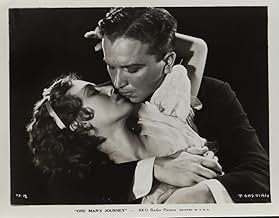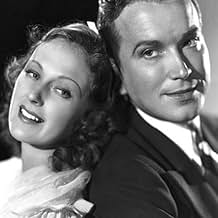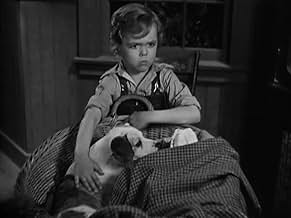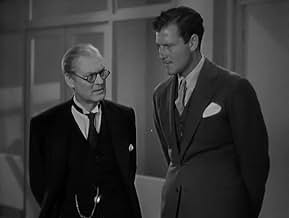Widower Dr. Watt moves to a small town, raising son Jimmy and abandoned Letty. Despite aspirations for research, epidemic, family needs hinder his goals. Years later, he realizes his life wa... Read allWidower Dr. Watt moves to a small town, raising son Jimmy and abandoned Letty. Despite aspirations for research, epidemic, family needs hinder his goals. Years later, he realizes his life wasn't a failure.Widower Dr. Watt moves to a small town, raising son Jimmy and abandoned Letty. Despite aspirations for research, epidemic, family needs hinder his goals. Years later, he realizes his life wasn't a failure.
- Awards
- 3 wins total
Samuel S. Hinds
- Dr. Babcock
- (as Sam Hinds)
Frank Ball
- Townsman
- (uncredited)
Dorothy Gray
- Letty's Daughter
- (uncredited)
John Ince
- Dr. James Carson
- (uncredited)
Lloyd Ingraham
- Townsman at Farewell Meeting
- (uncredited)
Dave O'Brien
- Dance Extra
- (uncredited)
Featured review
Lionel Barrymore gave a memorably restrained performance in this 1933 film. It stands as a precursor to films such as 1959's "The Last Angry Man" with Paul Muni.
The setting takes place in rural America circa 1910. Having lost his wife in childbirth, Barrymore returns to his roots only to lose his first patient there as well to child-birth. The embittered husband is ready to take the baby to the poor house but Barrymore takes the little baby girl in along with his young son. Just on the girl's 4th birthday, the father returns and seems much reformed. Barrymore gives the girl, Letty, back to him. Letty maintains a father-like relationship with Barrymore through the years.
As the years pass, Barrymore wins the hearts of the town with his dedication and free services for the impoverished.
He lets opportunities pass which could have gotten him out of the town. Some how we know this from the George Bailey effect of 1946's "It's A Wonderful Life." Like George Bailey, this doctor is going nowhere.
May Robson costars as a beloved housekeeper who enters the Barrymore home at precisely the right time.
This is a nicely done heartwarming story of rural America from 1910 through 1933.
The setting takes place in rural America circa 1910. Having lost his wife in childbirth, Barrymore returns to his roots only to lose his first patient there as well to child-birth. The embittered husband is ready to take the baby to the poor house but Barrymore takes the little baby girl in along with his young son. Just on the girl's 4th birthday, the father returns and seems much reformed. Barrymore gives the girl, Letty, back to him. Letty maintains a father-like relationship with Barrymore through the years.
As the years pass, Barrymore wins the hearts of the town with his dedication and free services for the impoverished.
He lets opportunities pass which could have gotten him out of the town. Some how we know this from the George Bailey effect of 1946's "It's A Wonderful Life." Like George Bailey, this doctor is going nowhere.
May Robson costars as a beloved housekeeper who enters the Barrymore home at precisely the right time.
This is a nicely done heartwarming story of rural America from 1910 through 1933.
Storyline
Did you know
- TriviaMerian C. Cooper had accused RKO of not paying him all the money contractually due for six RKO films he produced in the 1930s. In 1946, a settlement was reached, giving Cooper complete ownership of the RKO titles: Rafter Romance (1933) with Ginger Rogers, Double Harness (1933) with Ann Harding and William Powell, The Right to Romance (1933) with Ann Harding and Robert Young, One Man's Journey (1933) with Lionel Barrymore, Living on Love (1937) and A Man to Remember (1938).
In 2006, Turner Classic Movies, which had acquired the rights to the six films after extensive legal negotiations, broadcast them on TCM in April 2007, their first full public exhibition in over 70 years. TCM, in association with the Library of Congress and the Brigham Young University Motion Picture Archive, had searched many film archives throughout the world to find copies of the films in order to create new 35mm prints.
- GoofsAs Dr. Watt leaves the McGinnis house, the shadows of the trees fall clearly on the "sky" cyclorama.
- ConnectionsFeatured in TCM: Twenty Classic Moments (2014)
- SoundtracksDown By the Old Mill Stream
(1910) (uncredited)
Written by Tell Taylor
In the score during the opening credits and at the end
Details
- Runtime1 hour 12 minutes
- Color
- Aspect ratio
- 1.37 : 1
Contribute to this page
Suggest an edit or add missing content






































